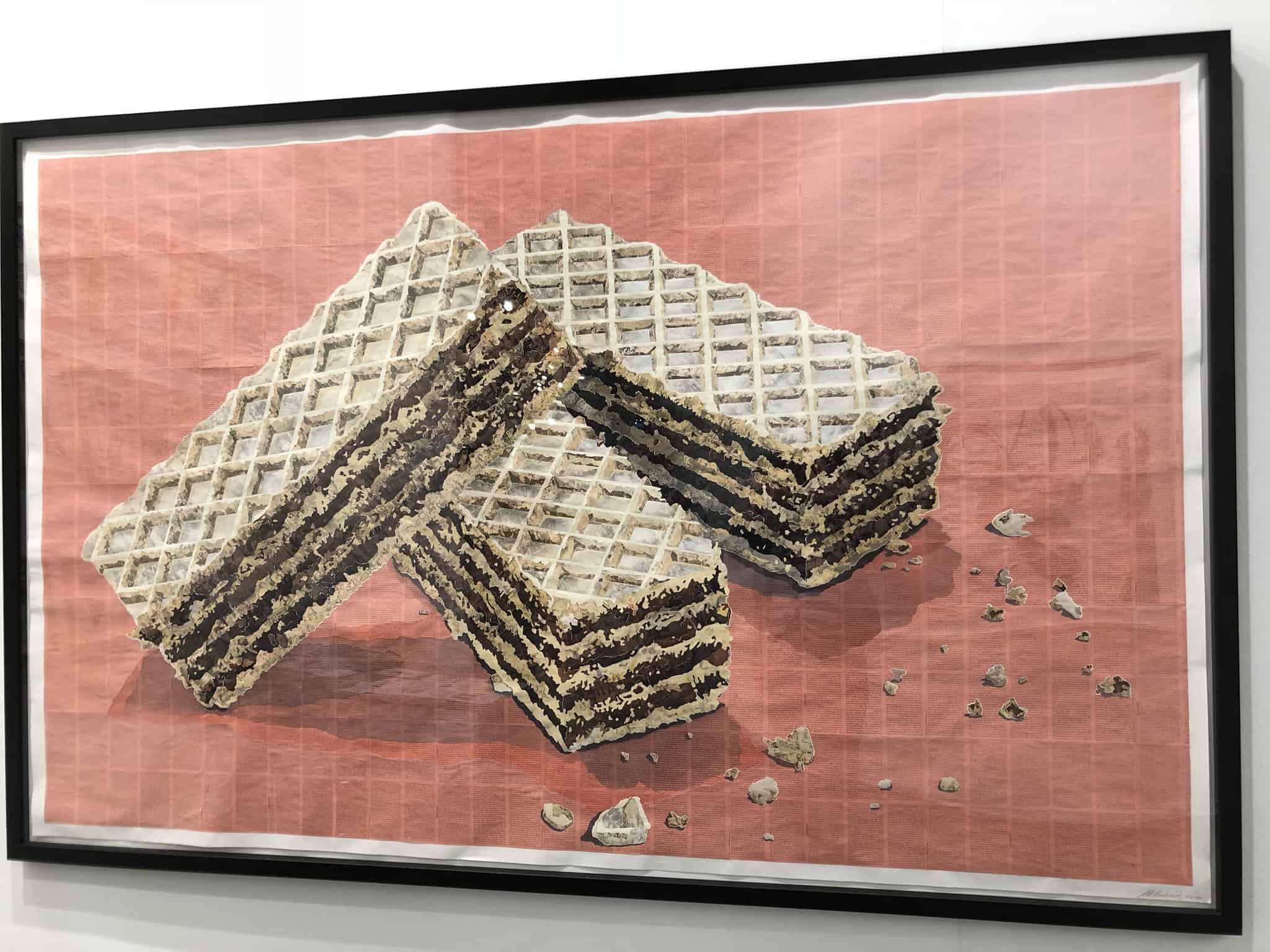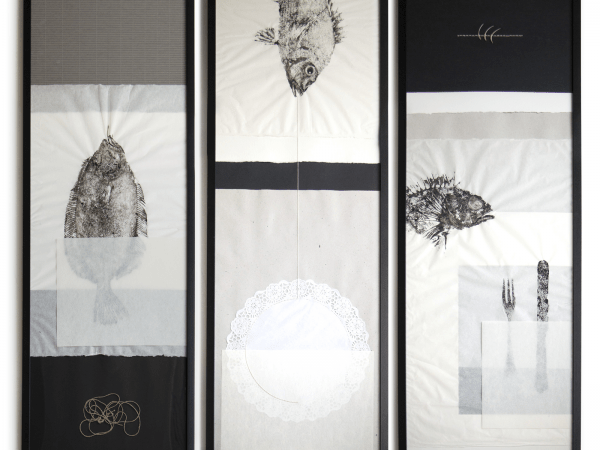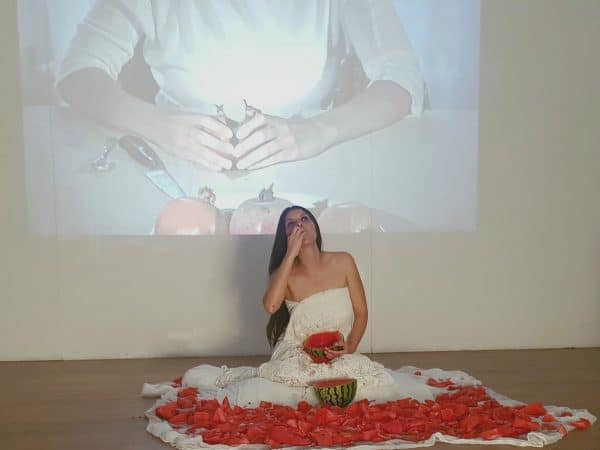This article was originally published in Spanish on March 11th on TheFoodieStudies.
There are lots of ways to face 30.000m2 filled with paintings, installations, sculptures, videos and other contemporary artworks. Some people search for new trends, other people come looking for renowned artists, and others to get to know new galleries and make contacts.
I´m specialized in food and art and my goal when visiting ARCO is quite clear: look for food, edibles. Not in restaurants on the fairground, nor in the temporary food stands and bars at ARCO itself. I look for food on the walls, on the floors, or wherever the artwork is placed. This approach is very defined, I admit, but on the other hand, it´s a very stimulating visit.
The search this year hasn´t been easy, but from the ones I have seen, I will tell you about a couple of interesting finds, not just visually, but also from the artists objective point of view, once you find out something more about their work.
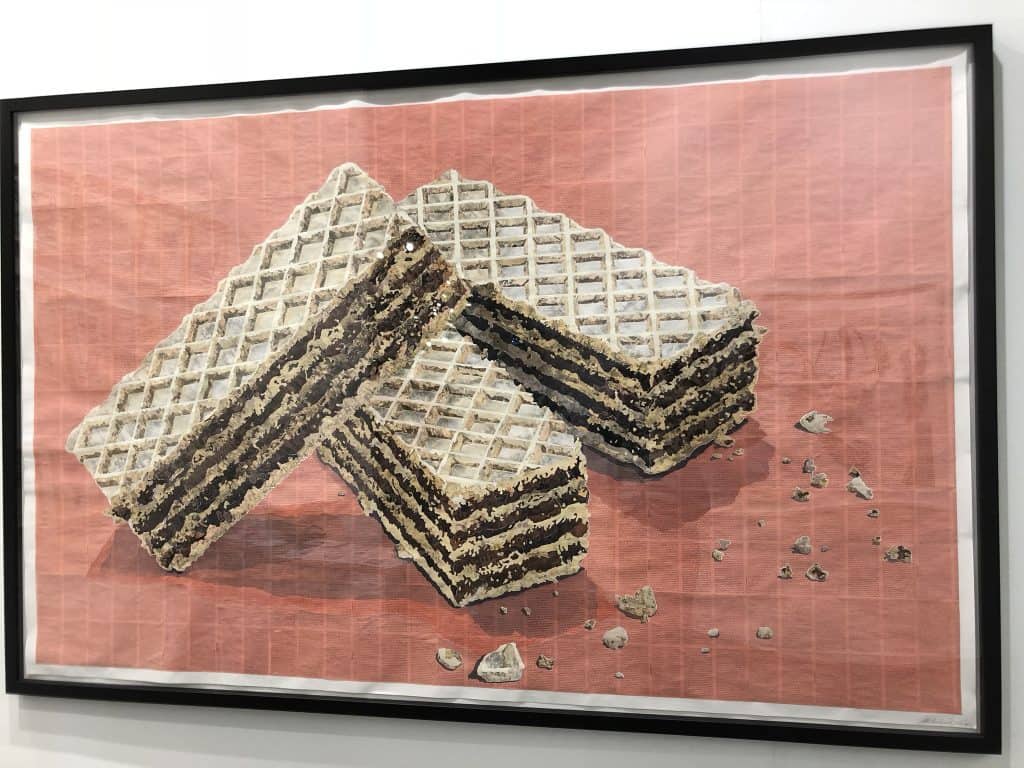
1. Seduction
The first thing I spot when entering pavilion 9 is a big pink painting with three enormous wafer biscuits and an obvious pop art looks. It is made by the German (video) artist Marcel Odenbach. Once you start approaching the work however, the wafers disappear, and an endless number of photographs start to show, all of them arranged by colour scheme to form the two different layers, the wafer and the chocolate and hazelnut filling. The big pink background then transforms into pages and pages of books in German. According to the gallery, all these elements together form an ode to the city of Vienna, the wafers as a symbol of the city and the collage of photographs with portraits of famous people as a symbol of the Austrian scientific and cultural world. Among them you can see the neurologist Sigmund Freund or the poet Ingeborg Bachman just to name a few.
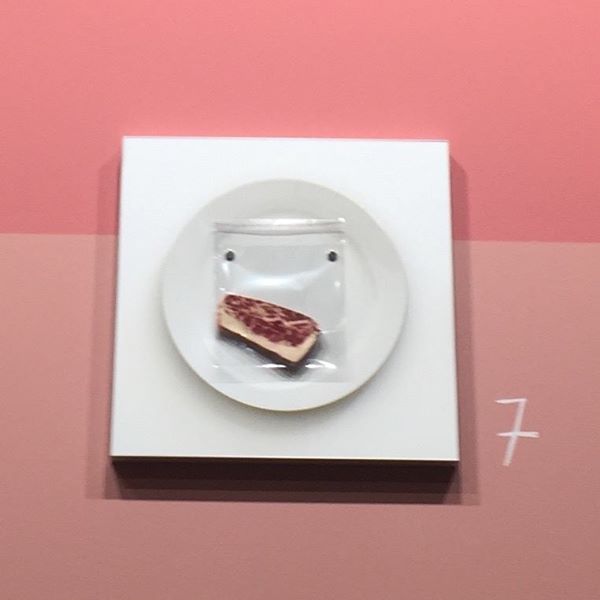
2. It’s, oh… what is that word? It’s so big, so complicated, and so sad
At the other end of the hall, I have found a little piece inside the wine bar ´Bodega Opening´. The bar is a proposal from Ansón&Bonet for this ARCO edition to serve glasses of wine and sandwiches, and has had quite a lot of success, it was constantly packed, specially during lunch time. Back to the art work, which is a photograph representing a slice of meat in a zip bag, hanging from a plate. Or something that looks like a piece of meat on a plate.
According to the artist´s comments on his Instagram account, Manuel Franquelo-Giner states that the paint isn´t actually paint, the meat isn´t actually meat, nor the photograph is what we understand as a photograph. Trough this and other works, such as for example his series ´Absent Referents´, he means to reflect on the path the food industry has taken, on the ecological disaster and on the human supremacy over animals and the unanimated. Quite a statement in this little piece.
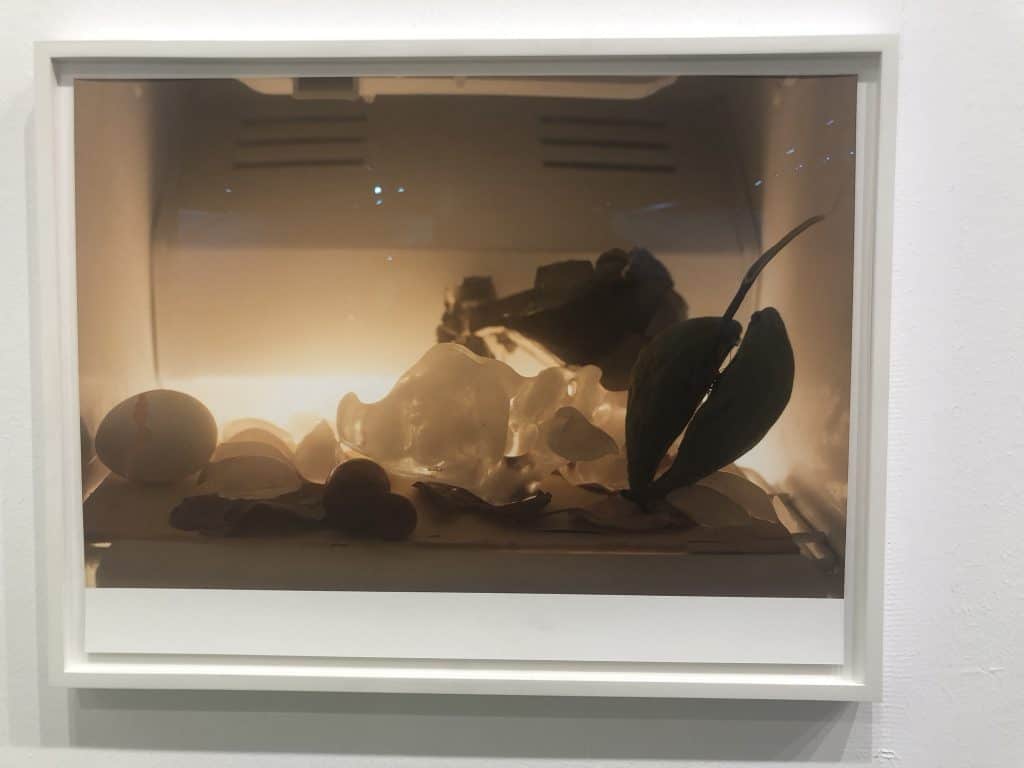
3. Freezer still life
At the end of the tour I stand still by a photograph from Wolfgang Tillmans, which at first sight suggests that we are looking at a still life, given the angle of the shot and the composition consisting of a variety of objects that look edible. Instead, if we look closely, we see a scene filled with elements that don´t usually end up in still life pictures or paintings, not in the historic nor in the current ones. The scene has been set up in a freezer, with a chunk of ice cubes, an empty egg shell and some dry leaves. Nothing edible or attractive, although there is something that looks like a potato and maybe some cucumbers, but it´s not quite clear what they are. Looking at other still lifes from the artist, we can see well known elements mixed with more odd-looking items. These works draw the attention to them precisely because of that factor: they look very familiar, but at the same time they are taken out of their usual context or composition to create a strangely attractive scene.
With just these three works we can say that food is clearly present in contemporary art, and from different points of view, from ethical and civic responsibility to visual play with daily objects, to representation of cultural identity on different levels. They are all works which not only stand out visually but generate all kinds of ideas to think about as well.

